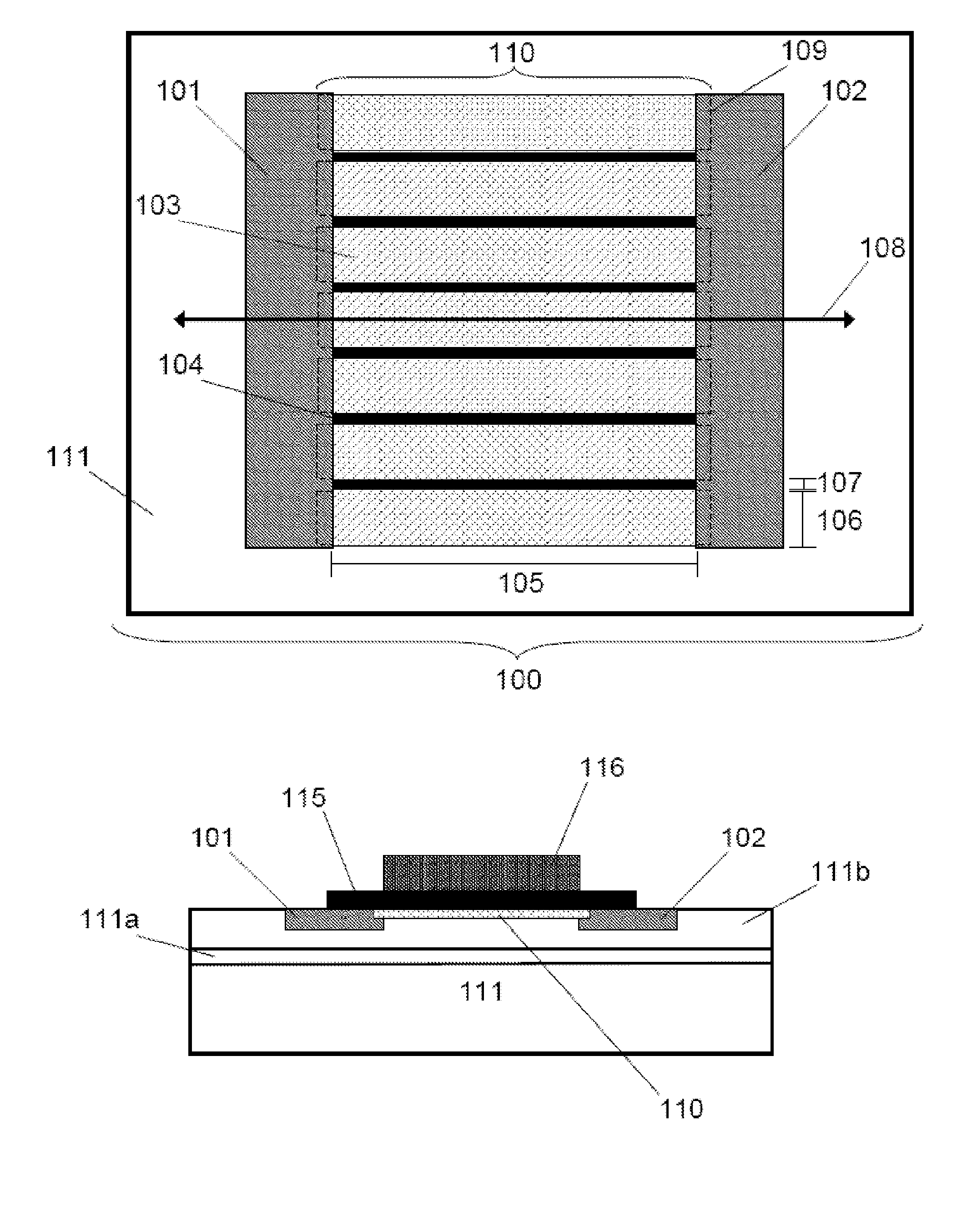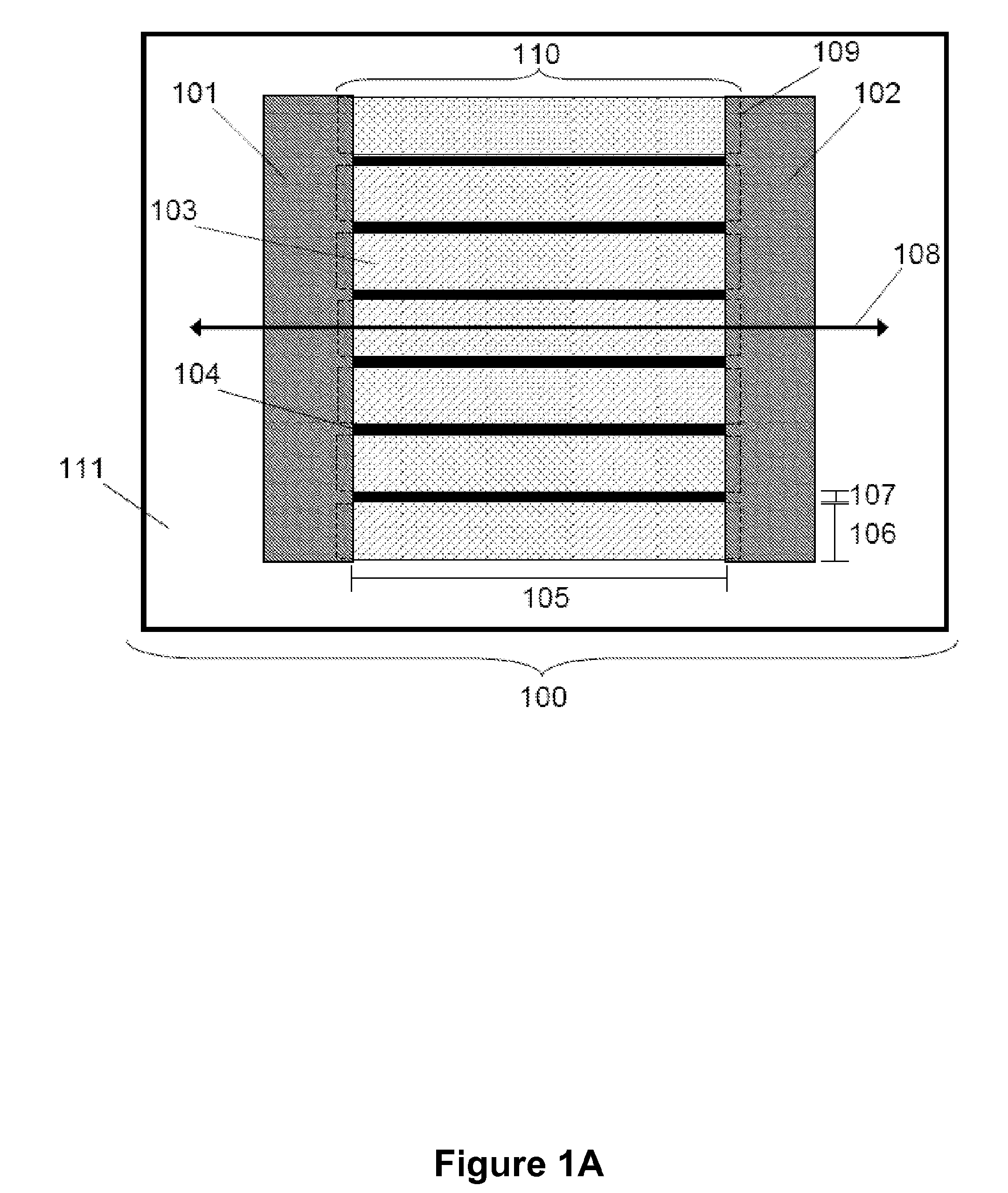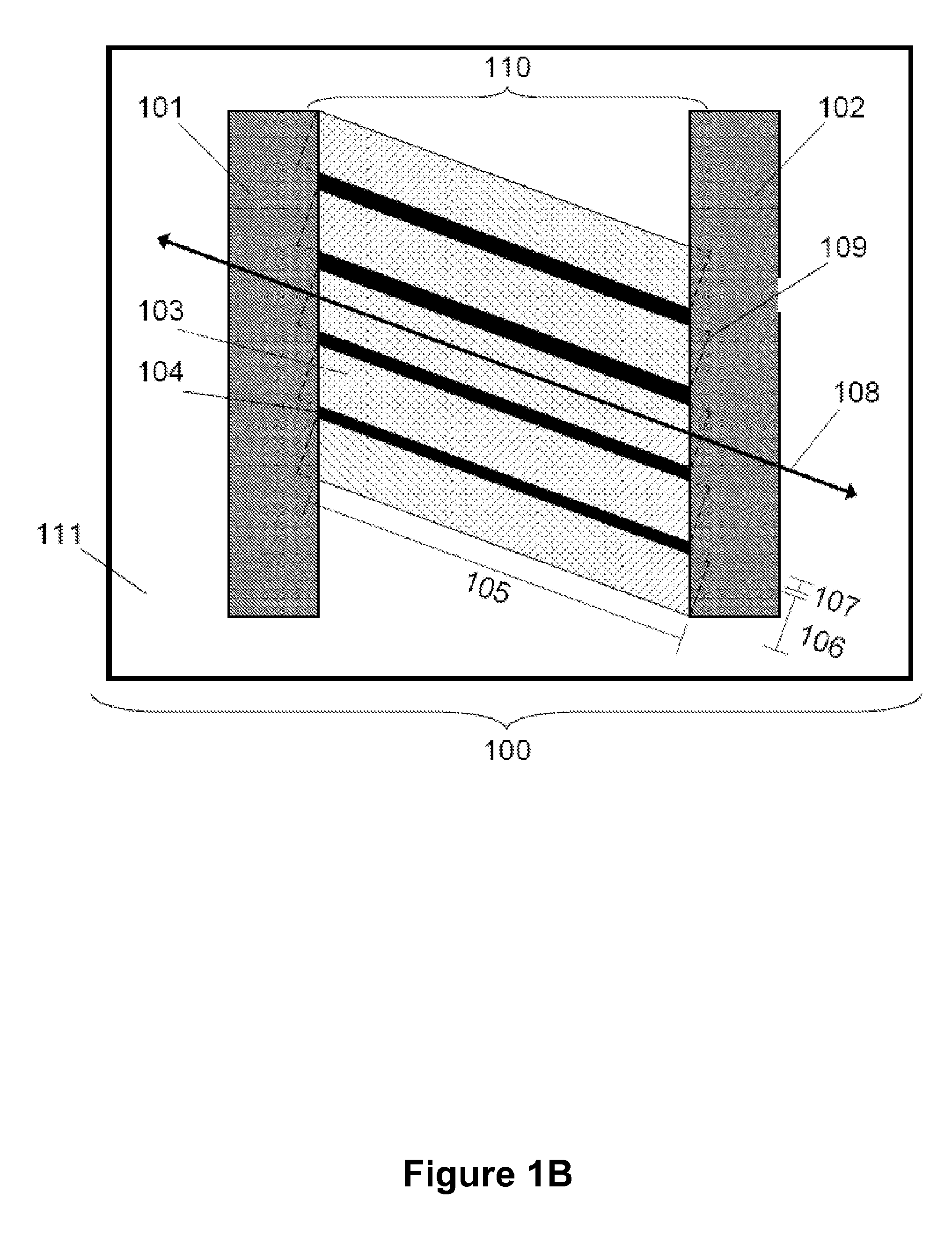Medium scale carbon nanotube thin film integrated circuits on flexible plastic substrates
a technology of flexible plastic substrates and integrated circuits, applied in the direction of nanoinformatics, connection contact materials, coupling device connections, etc., can solve the problems of limiting the on/off ratio of devices, limiting the commercialization of these systems, and reducing the attainable device on/off ratio, so as to enhance the electronic performance of electronic devices and improve electronic properties
- Summary
- Abstract
- Description
- Claims
- Application Information
AI Technical Summary
Benefits of technology
Problems solved by technology
Method used
Image
Examples
example 1
Medium Scale Carbon Nanotube Thin Film Integrated Circuits on Flexible Plastic Substrates
[0081]The ability to form integrated circuits (ICs) on flexible sheets of plastic enables attributes (e.g. conformal and flexible formats, lightweight and shock resistant construction) in electronic devices that are difficult or impossible to achieve with technologies that use semiconductor wafers or glass plates as substrates.1 Organic small molecule and polymer based materials represent the most widely explored types of semiconductors for such flexible ICs.2 Although these materials and those that use films or nanostructures of inorganics have promise for certain applications, existing demonstrations of them in ICs on plastic indicate modest performance characteristics that might restrict the application possibilities. In this Example we disclose advanced implementations of a comparatively high-performance carbon-based semiconductor comprising sub-monolayer, random networks of single-walled ca...
example 2
Theory and practice of “Striping” for Improved ON / OFF Ratio in Carbon Nanonet Thin Film Transistors
Abstract
[0174]A new technique to reduce the influence of metallic carbon nanotubes (CNTs)—relevant for large-scale integrated circuits based on CNT-nanonet transistors—is described and verified. Historically, electrical and chemical filtering of the metallic CNTs have been used to improve the ON / OFF ratio of CNT-nanonet transistors; however, the corresponding degradation in ON-current has made these techniques somewhat unsatisfactory. Here, we diverge significantly from the classical approaches in favor of a new approach based on relocation of asymmetric percolation threshold of CNT-nanonet transistors by a technique called “striping”; this allows fabrication of transistors with ON / OFF ratio >1000 and ON-current degradation no more than a factor of 2. We offer first principle numerical models, experimental confirmation, and renormalization arguments to provide a broad theoretical and e...
PUM
| Property | Measurement | Unit |
|---|---|---|
| thickness | aaaaa | aaaaa |
| average distance | aaaaa | aaaaa |
| aspect ratio | aaaaa | aaaaa |
Abstract
Description
Claims
Application Information
 Login to View More
Login to View More - R&D
- Intellectual Property
- Life Sciences
- Materials
- Tech Scout
- Unparalleled Data Quality
- Higher Quality Content
- 60% Fewer Hallucinations
Browse by: Latest US Patents, China's latest patents, Technical Efficacy Thesaurus, Application Domain, Technology Topic, Popular Technical Reports.
© 2025 PatSnap. All rights reserved.Legal|Privacy policy|Modern Slavery Act Transparency Statement|Sitemap|About US| Contact US: help@patsnap.com



